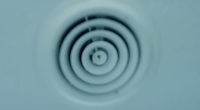UNWIND
Media language
Narrative
Representation
Audience
Audience
The short film Unwind is based on a novel written by Shusterman. It is directed by a man named John Lyde. This short film emphasises certain issues, for example the subject matter of this film is abortion.
https://www.youtube.com/watch?v=9snP4HuRsr4
The opening begins with titling explaining the occurrence at this present time. A sound bridge is used from the titling to the first shot that we see which is an extreme close-up of an eye, slightly watery representing the fear being exposed from the quick side to side movements of the eye. The opening shot is extremely powerful as we are only
introduced to the girl from looking at her eyes. We are not offered a long-shot of her body nor are
we given the girl’s name. This suggests
she’s unimportant, implying she is not the only person to under go this operation. Through the use of the many
point-of-view shots we as spectators are made to feel as if we are the girl and this builds
our fear and despair for the character, generating sympathy. This then generates a sense of enigma codes as in these few seconds of the first shot, spectators would question who is this and what is happening? Although we are never given an establishing shot to confirm our reading of the location, we can use costume, sound and lighting to inform us that this film is set in a hospital environment. The diegetic sound of a heart monitor is a not a visual semantic give away, however, we associate this sound effects with hospitals.
|
|
The characters in this short film can be split into two categories with typical character archetypes. The doctor and nurse would be the antagonist and the girl is our protagonist. However the girl and the nurse are our leading roles as they have the most dialogue throughout.
The costume that the doctor wears is a stereotypical costume for medical staff. Since this character is operating on the girl we can assume he is the doctor. What actually heightens the fear and tension when we know the doctor is taking the girl through the unwinding process, is the fact that what we know about doctors is that their purpose to help save lives. That is why they can be some of the only people we can put all our trust
in. But since we know he isn’t doing something good, in reality he is
disillusioned with the rest of society, it’s like a kick in the stomach to be put in this girl’s position and to therefore feel so deceived by someone who should be morally
good.
Throughout this short film, we are constantly being positioned into the patients perspective, this is done using a high frequency of shots of point-of-views.
|
Point-of-views are effective to spectators as it positions us to put ourselves into their position, trying to imagine and feel the emotions they are feeling, creating sympathy and a feeling of hopelessness. A significantly important element of this short film is the use of focus-pulls and shot-reverse-shot as it has been planned to every detail. Although the editing is very primary by using just cuts and fades to black, the use of focus-pulls are used in replacement. These camera techniques help signify realism as she is drowsy her sight is never fully focused, which is shown through numerous focus-pulls, almost as if she is not the only one under anaesthetic, we as spectators are too.
You can notice that we only ever see the protagonist eyes and we do not see anymore of her. This then gives the film a deeper and evocative overlook on the girl, making the audience feel more connected to her. Using extreme close-ups increases the recognition of her facial expressions, making it more engaging for spectators.
The diegetic sound of the girl's breathing is audible throughout
the procedure, which stresses the characters tension when she begins to
panic. It's hard to understand at first but throughout the film, low,
ominous non-diegetic music plays in the background which cresendos in volume as the girl
begins to panic. This then builds and becomes more erratic as it reaches a
crescendo the moment before the girl finally can't see.
Dialogue is also vitally important because it is the speech that
develops characterisation. In this short the nurse constantly
speaks to the girl in a very feminine and
soft tone, saying such things as 'sweetie' which, when we realise what is happening, sounds very patronising for the
protagonist. The fact that this nurse is so endearing and soothing is a shock to the audience because we feel, like
the girl, cheated and full of disbelief:
after all, how could someone so nice happen to be a part of something so evil? It is also subverting the stereotype for 'a
killer', however she is not the direct
killer.
The genre of this short film is established through the
iconography. For example, the iconography of Sci-Films usually includes
futuristic weapons. However, we are barely even shown much of what is happening in Unwind, which
then makes spectators guess from the use of Mise-en-scene, editing, camera
work and sound. Identifying one piece of iconography which is genre-specific is
the cleanliness of the environment in the setting and since so many Sci-Fi films will always
be binary opposite locations: either a dirty, disused area or a shiny, new,
clean environment. In this case, the film conforms
to a stereotypical location.










No comments:
Post a Comment